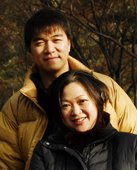6月3日,普洱茶的产地――云南普洱市宁洱县刚刚发生了里氏6.4级的地震,其实就在同时,各地的普洱茶市场也在经历一场地震,最近一个月,普洱茶的价格普遍下跌了20%-50%,有些投资者囤积的数百万、上千万元的普洱茶饼一夜之间严重贬值。我们今天就先来看看广东,广东是全国最大的普洱茶消费市场,每年的销量占到国内总产量的70%。
普洱茶这轮暴跌,让市场措手不及。从去年开始,普洱茶价格就一路走高,特别到了今年前四个月,市场上普洱茶的均价上涨了3至4倍,个别品种甚至上涨了几十倍,远远超过股市同期涨幅。当时,也有不少炒家从炒做普洱茶中,获得了比炒股还要丰厚的暴利。
广州茶叶市场,是全国最大的普洱茶集散地,也是普洱茶价格上的一个晴雨表。在芳村茶叶城记者看到,来逛茶叶市场的顾客已经非常稀少,整个大厅显得空荡荡的,因为闲来无事,茶叶店的一些员工干脆把这里当作了运动场。这与普洱茶火爆时的场面形成了鲜明的对比。
现在的茶叶都不出售大量的储存在家里记者又来到了附近的一个茶叶市场,这里也以销售普洱茶为主要业务。与芳村茶叶城一样,记者看到的同样是一个没有顾客的一座茶城,据这里的普洱茶经营者介绍,造成现在普洱茶市场萧条的原因,除了淡季影响以外,普洱茶价格的大幅度下跌和集体“跳水”,也是一个重要的原因。那么,目前在广州市场,普洱茶的销售价格到底降了多少呢?
销售人员:“最火的时候像7572跟7554(普洱茶规格)这个都要到两万多块钱。”
记者:“现在卖多少?”
销售人员:“九千多块钱。”
普洱茶从两万多元的最高价,降为现在的一万以内,价格下跌了一半,这让许多普洱茶的买家始料不及,然而让他们更没有想到是的,整个下跌的过程,仅仅用了30多天的时间。这位普洱茶的经营者,这样解释了普洱茶的萧条原因。
普洱茶经营者:“因为事先(普洱茶价格)炒得太高了,变成市场没有交易,没有交易就停下来了,也没有人接(买)市场上交易量不是很大。
据了解,这次普洱茶之所以在广州市场上价格大跌,是因为就在一个月前,广州市场上,一些人对普洱茶进行了炒作,而炒作的程度有人用“疯狂”两个字来形容。那么,炒作普洱茶究竟有多大的利润呢?
在广州的南方茶叶市场,记者了解到,从2006年下半年自今年的年初,普洱茶中的知名品牌大益、下关、中茶等,成为炒作的对象。
销售人员:“一天几百的(涨)。”
因为这些品牌质量稳定,知名度高,收藏升值的潜力大,因此,在普洱茶市场上,受到许多炒家的追捧。
商家:“一天一个价,每个月翻一倍。”
由于炒家的炒作,市场上有的品牌,一件30公斤左右的普洱茶,从不到5000元的出厂价,一下子涨到了23000元,上涨了近5倍。
商家:“(有的)涨了百分之二三百。”
如此高的利润,极大的刺激了市场对普洱茶的需求,一些对普洱茶一无所知的人也纷纷投入资金,加入到炒作普洱茶的行列,一时间,一场爆炒普洱茶的场面在广州茶叶市场展开。
商家:“今年的四月份是破记录的,(一天)能销售四五百件(十二吨或十五吨),凡是有店就必须摆上普洱茶,卖普洱茶甚至在通过这两年广州这边的推动,包括炒作这方面,在全国也铺开了。”
普洱茶市场幕后操盘手
那么,在广州的普洱茶市场,厂家和经销商这只看不见的手,究竟是如何来掌控市场的呢?黄建璋,广东省文化学会茶文化研究专业委员会副会长,《茶艺》杂志主编,一直对普洱茶市场进行跟踪调研,他认为首先是经销商通过向普洱茶的生产厂家交纳押金,来取得市场上对某种产品的垄断地位,而这种押金的数目也大得惊人。
黄建璋:“(厂家)跟商家有一个包销的协议,(押金)据听说是从一百万到两三百万,甚至翻到去年给他们的押金,据听说达到一千万。”
为了证实经销商向厂家交纳巨额押金的说法,记者向这位经销商进行了询问。
经销商:“三五百万,有的是一千多万,有的三千万都有。”
经销商在取得了某种规格的经销权以后,开始放货。
经销商:“先放个大概20%左右投放市场,然后再找一些比较亲近的人,再把它收购回来。”
而经销商回收的价格,则比卖出时的价格要高出许多。
经销商:“我原来卖给你比如说五千块钱卖给你,现在市场涨到七千块钱。有人过来问我们要,那我们就可以把你手上的收回来嘛。你愿意这个价格卖给我们我们就收,我们再卖个别人。
经过控制卖出的数量,造成市场缺货的假象,叫做“捂盘”,然后经销商通过高价回收的手段,抬高自己经销品种的价格,这样,经销商就完全掌控了市场上普洱茶的价格。
经销商:“你控盘控到多少程度,你自己心里有数,你不卖的话你再出去收一收,价格自然就往上走了总量就这么多你在放出来收,是不是自然而然价格就抬上去了,这也是控盘嘛。”
就此记者得到了这样的一个操作流程,以市场上一件30公斤出厂价为4800元的普洱茶为例,一级经销商用重金取得经销权以后,在市场上只放出20%的量,造成这种产品紧缺的气氛,然后又以高价进行回收,以抬高其价格,然后再将其全部抛出,经过二级三级经销商不断的重复炒作,最后将价格抬到了23000元,而这时在23000元高位上接手的许多散户,则被牢牢的套住。
2003年3月,云南省质量技术监督局公布了,云南省普洱茶地方标准:普洱茶是以云南省一定区域内的云南大叶种晒青毛茶为原料,经过后发酵加工而成的散茶和紧压茶。在云南的产茶区,记者看到,采摘下来的茶叶经过这样的铁锅杀青,然后进行晾晒,然后存放,让它自然发酵。制作过程并不复杂和神秘,一些医学专家也称,普洱茶的特殊功效,还没有人做出过足够可信的实验结果。实际上,从功效上,普洱茶与其他茶叶并没有多大的差别。
钟先生,原来做木材生意,今年3月份在朋友的劝说下将做木材的60万元钱,购买了普洱茶,希望其能够升值后抛售。
钟先生:“估计在半年之内,能够赚10%以上(利润)。”
普洱茶囤积之苦
然而不断下跌的价格,不但使他没有赚到预期的利润,而且现在自己资金也被普洱茶套牢,他现在要做的只有等待。在广州,像钟先生一样,因为购买普洱茶而被套住上百万的人也不在少数。采访中记者了解到,目前市场上普洱茶真正用于消费的并不多,而多数则被放到了仓库里,让其升值。
记者:“这是你的?”
符建深:“对对。”
记者:“这大概有多少件?”
符建深:“有两三百件。”
这里所存放的各个知名厂家的普洱茶足足有6吨多。符建深,现在经营一家旅游山庄,2006年开始购买普洱茶,由于购买的数量不断增加,为此,他专门租了一个仓库。在这个仓库里记者注意到,这里所存放的各个知名厂家的普洱茶足足有6吨多。他还告诉记者,他的3个朋友在他仓库的隔壁,同样存放了普洱茶。
符建深:“希望越多人懂得这个茶的价值,我们大家财富也会跟着上来的。”
现在在广州,究竟储存有多少普洱茶,记者无法知晓,但却听到了这样的说法:“(普洱茶)只有5%在消费者的肚子里,还有95%全部在投资者收藏的仓库里。”
符建深:“从现在开始,一克普洱茶不进,广东这个市场。那么广东在5年甚至8年喝现在存有的普洱茶都喝不完。”
面对普洱茶成了疯狂炒做的对象。一些行家告诉记者,和以前不同,这轮暴炒中出现了很多反常的现象。比如说,普洱茶本来应该年代越久远,价格越昂贵,可是,前一段时间,有些新茶的价格卖的比几十年的老茶还要贵上几倍,让普洱茶的行家里手都大跌眼镜。那么,这种反常的背后到底隐藏着什么秘密呢?
新茶价格上涨内幕
垄断货源、虚假交易、抬高价格,看来炒茶客和股市上那些庄家操纵股价的办法如出一辙。而且这些炒家和股市庄家还有一点相似的地方,就是善于制造概念。他们在不断抬高普洱茶价格的同时,还四处传播普洱茶具有降血脂、降血压、降血糖的神效。可是,市场暴跌之后,人们才发现,原来炒家的那些概念只是夸大其词的宣传。
概念泡沫经过这轮暴跌,广东很多炒茶客,现在已经被深度套牢。现在他们都寄希望于年底的时候,市场行情能够有所好转,能将手中套牢的普洱茶抛出去,至少把本赚回来。然而,在这个明显供大于求的市场上,普洱茶的价格还能回到他们期盼的高位吗?
陈国璋,经营普洱茶多年,对现在低迷的普洱茶市场,年底是否能走出低谷,表示了担忧。
陈国璋:“我觉得(价格)是下的多。”
而黄建璋认为,除了一些品位真正好的普洱茶会升值以外,大部分的普洱茶的价格会下降。
黄建璋:“这里面含的水分很多,当有一天给人家发现到这里面的奥妙,也就是说泡沫一旦被吹开被吹破了,那么整个普洱茶的行情,价位就会掉下来,到那个时候掉下来那就可惨了。”
云南省西双版纳地区的勐海县,是普洱茶著名的产地之一,这个地区每年普洱茶的价格,直接影响云南省全省的原料价格,因为在云南许多产区普洱茶原料的定价,都要参照勐海县的价格。
记者:“那么现在的价格?涨得什么样的地步?”
茶商:“现在涨到台地茶,150(元)以上,250(元)200(元)都有,以前是一公斤毛茶台地茶25(元)30(元)35(元)都有。”
据了解,在勐海县班章的古树茶,由去年的每公斤320元,一下子爆涨到今年春天的每公斤1250元,上涨了近4倍。
茶商:“大树茶老树茶,上浮了两到三倍,台地茶一倍还要多一点,比去年的价格统统都要上浮了。”
迅速上涨的普洱茶的价格,让勐海县的许多人始料不及。
现在,每天一大早,爱伲族的康蛇,都要和家人一起到自家的茶园里采茶,她家所在的南糯山,是勐海县重要的普洱茶产地,自从今年春天茶叶上涨以后,全家人就很少休息。
康蛇:“茶叶发的很多,因为茶叶价格很好,所以不想给它发老了,所以比较忙一点,经常来摘。”
记者:“以前多少天摘一次?”
康蛇:“差不多隔半个月摘一次。”
记者:“现在呢?”
南糯山村的这位负责人告诉记者,虽然现在茶叶的价格涨了两倍多,但许多村民还是希望茶叶的价格能够继续再涨一些,所以现在的茶叶都不出售,而是大量的储存在家里。这不得不让他感到不安。
在勐海县,对于迅速膨胀的茶叶价格,担忧的还有许多人。
云南省茶叶商会副会长曾云荣:“从原料近期飞涨的情况来看,我表示很担忧,因为从长远看,价格的大起以后就必然会出现大落。”
云南省茶叶商会副会长曾云荣告诉记者,由于虚高的茶叶价格,使许多农民奇货可居,对茶叶的出售价格,有了更高的期待。
曾云荣:“这个茶昨天开800元,今天开1000元,明天开1200元,他就看到这个利益,所以他就观望,一观望就等待,一等待市场一变化,他就吃亏。”
在勐海县的一些普洱茶生产厂家,记者了解到,因为目前普洱茶的毛茶价格偏高,使得许多普洱茶的生产厂家,不愿多进原料。
记者:“你们预计进原料进多少?”
生产厂家:“大概200吨左右吧。”
记者:“那你现在进了多少?”
生产厂家:“今年大约进了二三十吨,四十吨左右。”
广东的普洱茶市场在人为操纵之下,短短半年间走出了暴涨暴跌的行情。一批接盘的炒家,手里囤积了大量普洱茶现在却无法出手。其实,这轮疯狂炒做不仅带动了普洱茶的价格大幅波动,就连云南当地用于加工普洱茶的毛茶,价格也跟着跌宕起伏。
在炒做风的推动之下,普洱茶产业陷入了一个恶性循环——原料价格虚高,造成许多厂家减少进购原料,而厂家减少进货,又使囤积毛茶的中间商难以出货。那么,现在勐海县,那些中间商手里被套住的毛茶到底有多少呢?
据了解,由于前些时候毛茶炒作的价格过高,目前的茶价已经开始下跌,许多中间商已经被牢牢套住。一位不愿透露姓名的中间商这样告诉记者。
中间商:“现在有好多在这方面出现很大的问题,有压的多的一百吨的也有
两三百吨的都有。他们不会出手,他们要等市场回升他们才会出手,所以说现在中间商是不动的。”
康蛇:“现在隔五六天,六七天就可以来摘了。”
康蛇告诉记者,由于现在茶叶涨价,她们家的收入也比往年有所提高。每次采茶回来,康蛇都要将茶叶倒如锅里进行杀青。
记者:“你这个炒出来就卖吗?”
康蛇:“要是要卖,但是还是要留一下,看一下这个市场,如果价钱不是我们想象的那样高,就不卖。”
在康蛇的家里,记者发现了许多储存的茶叶。
记者:“有多少斤?”
康蛇:“有三四百公斤。”
记者:“那为什么不卖呢?”
康蛇:“因为人家说会涨价,所以暂时先留着吧。”
记者:“如果以后真的跌了怎么办?”
康蛇:“我也不知道。”
曾经当过勐海县茶叶办公室主任的曾云荣告诉记者,目前现在勐海县每年产春茶5000吨,而现在存在中间商仓库里的,也是一个不小的数量。
记者:“现在据你估计中间商存的茶叶有多少?”
曾云荣:“估计勐海1500到2000吨左右。”
那么,究竟是什么原因使勐海县今年普洱茶的原料价格,涨幅如此之大呢?曾云荣:“今年(炒家)通过成品茶的炒作以后,大量获取利润效益以后转入原料收购的炒作。”
在勐海县,记者看到,大小的普洱茶生产厂家,遍地开花,许多地方,一家挨着一家,据了解,由于目前普洱茶价格的不断攀升,并且生产用的工艺设施,并不复杂,因此目前已有以前的10多家加工企业发展到123家。
岩公告诉记者,目前勐海县一年能生产毛茶1万1千吨,而实际上勐海县100多家工厂实际需要毛茶3万吨以上,近2万吨的缺口,自然加剧了企业间对原料的竞争。因此,今年的普洱茶原料的上涨,也在情理之中。调查中,记者了解到,针对目前炒作普洱茶的现象,国家要制定一个普洱茶的统一标准,防止各种良莠不齐的普洱茶进入市场,参与炒作。
另一方面,针对普洱茶加工企业遍地开花,抢夺原料,哄抬价格的现象,要在建厂规模,资金上,提高准入标准,关小厂,建大厂。从根本上制止炒作原料价格的现象。



